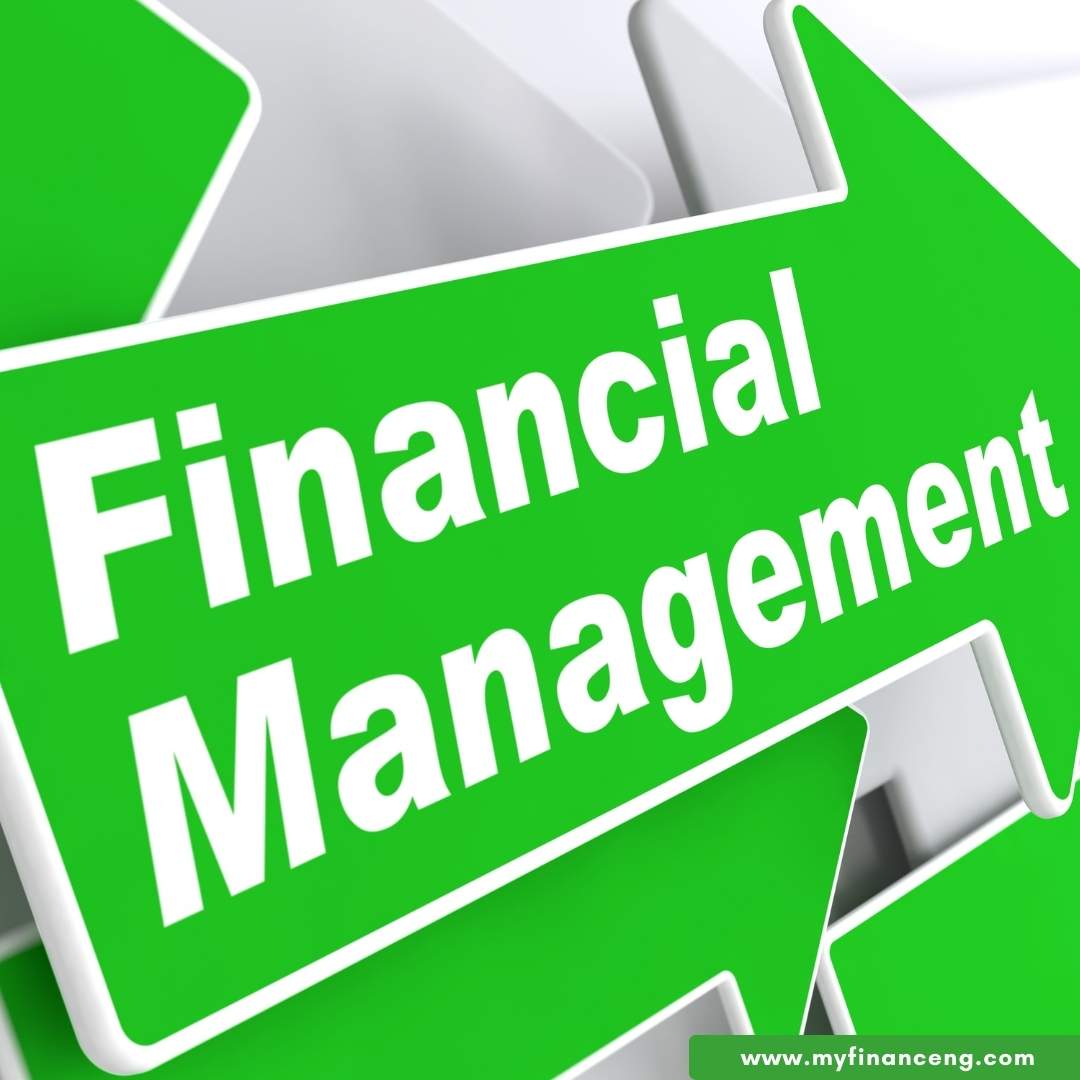Introduction
Discover how comprehensive financial management helps you build wealth, manage risks, plan for retirement, and achieve long-term financial security.
Creating wealth takes time and dedication, as it requires planning and strategy. One sure road to many savings is dedicated comprehensive financial management.
This comprehensive system spans budgeting, investing, tax strategies, debt management, and more, all of which are the makings of a roadmap to accumulate wealth and strengthen, plan, and manage a financial strategy.
In this post, we’ll explore how embracing holistic money management can greatly impact your wealth and the quest for financial freedom.
What Is Comprehensive Financial Management?
The concept of holistic financial management The term holistic financial management refers to what is known as comprehensive financial management. It includes arranging and preparing different financial components like income, expenses, investments, debts, taxes, and retirement, among others.
Unlike regular old financial management, which might focus on just one aspect of financial planning such as budgeting, comprehensive financial management looks at the big picture: being deliberate in ensuring that each of these areas is indeed interconnected and all able to work towards your wealth objectives.
Comprehensive financial planning Major components of a comprehensive financial plan The overall key is to master a set of key components so there’s less stress when things happen. This systematic and comprehensive approach gives the individual a cogent, workable plan for financial success.
Building a Solid Financial Future
A firm financial groundwork is necessary before starting any trip to wealth. First, take stock of your current financial situation, including your income, debts, savings, and expenses. This snapshot helps you see where you stand and where you need to improve.
Now, on to the Specific, Measurable, Attainable, and Time-bound (S.M.A.R.T) and financial goals. Whether putting money down on a house, establishing an emergency fund, or saving for retirement, having these goals in your mind keeps you guided. They form the basis of your wealth management plan – so you always have defined goals to aim for.
Here you will find: Budgeting & Cash Flow Thoughtful spending will always help you do more with less.
Budgeting Is A Fundamental Part Of Financial Planning And Management. A good budget allows you to spend less than you earn, use your financial resources effectively, and stay focused on your financial goals. The key to solid money management is having a realistic budget that lists your regular and irregular expenses.
Financial planning and budgeting are an inseparable part of managing cash flow. By regularly keeping tabs on your income and expenses, you can stay on target, out of unnecessary debt, and with enough left over for saving and investing.
Knowing where your money goes helps you make those informed decisions and tweaking your money habits accordingly. When you manage your cash flow effectively, you’ll be able to save more and have the financial flexibility to take advantage of opportunities to accumulate wealth.
Investing Wisely
Wealth creation is all about investing. Although saving is important, it’s rarely sufficient to create significant wealth. When you invest, your money has the opportunity to grow, yielding returns that both multiply and compound your net worth.
Holistic wealth management means ensuring that you don’t have all of your eggs in one basket of investments and that the overall investment mix matches your personal risk tolerance and long-term financial goals.
Investments can vary from equities, bonds, and mutual funds to real estate and alternatives. The key is to have a balanced portfolio that reduces risk but retains upside potential. By choosing wisely and sticking with your investment decisions, you develop several income streams that will help you build wealth over time.
Managing Debt And Financial Leverage

We often don’t have favorable things to say about debt, but when used strategically, it can be an asset in helping you accumulate wealth. One key part of a thorough financial plan is managing debt, whether credit card debt, student loan debt, mortgage debt, or business debt.
The idea is to pay high-interest debts off first while keeping a lid on your debt-to-income ratio. If you use debt to pay for investments or to use it for business purposes, then it is possible for it to help still you build wealth faster.
For example, you could make a lot of money by borrowing money to buy property or using several low-interest loans to expand your business. However, manageable debt is important to stay out of financial ruin. “Good financial management is all about using debt as a tool, not as a burden.”
Tax Planning Strategies
You can’t avoid taxes, but you can plan to lower your tax bill and get to keep more of what you’ve worked so hard for. Some kinds of tax planning are good and even necessary for money management. This also means knowing the tax consequences of your income and your investments and savings.
Using tax-efficient investments, tax-deferred retirement accounts, and capitalizing on deductions and credits will lower your monthly pay. You can redeploy those savings in wealth opportunities; that is where the power of tax planning comes into play.
Insurance and Risk Management
Risk management through insurance is an integral part of holistic financial planning. Accidents, illness, or damage to your property caused by something else not covered can knock you off course if you aren’t insured properly. Insurance is a way to protect your assets from the financial consequences of these risks.
Another means of managing your money effectively is putting thought into insurance in all its forms, from health and life to home, auto, and even business.
Risk management also involves setting aside some risk capital, or an emergency fund, to replace damaged equipment or to cover an unanticipated expense so that you do not need to draw down on long-term investments or incur a debt.
Retirement Planning
The longer the lead time before you retire, the more time compound growth has to benefit you. Complete financial planning means you’re always putting money away for retirement, whether in the form of 401(k) plans your employer offers, IRAs, or other investments.
Starting early means many years of your money compounding. The more comprehensive solutions are also planning for the lifestyle you hope to achieve during retirement and ensuring that you have a passive income that will sustain that lifestyle once you are no longer working. Long-term value preservation and retirement planning are crucial and critical parts of it.
Planning for Your Estate and for Your Wealth to Flow to Your Loved Ones

Estate planning helps to make sure your assets are transferred to your beneficiaries in a tax-efficient way. Good financial planning encompasses a plan to reduce the estate tax and facilitate asset transfer at your death.
Preparing a will, setting up trusts, and naming beneficiaries are critical to safeguarding your legacy. Estate plans can also plan for dependents (children, family, pets) or ensure that charitable gifts are carried out how you want. Strategically planning so that your hard-earned wealth carries on for generations.
Creating and Preserving a Culture of Order and Cleanliness
If you want to create long-lasting wealth, discipline with money is what it takes! It includes sticking to your financial plan, not making impulse purchases, and always returning to your budget and investment plan.
Comprehensive financial planning builds that discipline by providing an organized, goal-oriented process for managing money. Discipline, then, is mostly about deciding at the moment that a long-term benefit is more important than short-term gratification.
It’s making conscious decisions aligning with your vision of building wealth and continuing to get better at it to keep yourself on track.
What Are The 4 Types Of Financial Management Explain?
It’s a digital world that we live in today, so many tools and apps can guide you in successfully managing your finances. You can also use financial technology (fintech) to simplify budgeting, investing, and spending tracking.
End-of-path financial management utiliza beschosas herramientas para llegar, integrarse, analizar y tomar decisiones financieras más informadas.
By leveraging tools like investment trackers, retirement calculators, or budgeting apps, you keep a pulse on your financial health and can pivot when necessary. Technology enables consumers to seize control of their financial lives to manage their money better and easily.
Benefits of Total Financial Management
Total money management means nothing. If you have money but don’t have wealth, the wealth doesn’t last. If you do all of those things and tie them together, it creates a plan for you to be financially in a great place in the future.
The advantages are enhanced financial security, reduced risk, efficient utilization of resources, and more control over your financial future. With the proper tools, an astute plan, and the motivation to work hard enough, overall financial control leverages a good base for lasting wealth.
The Four Types of Financial Management

So, what is financial management? Financial management includes many things, aiming to keep individuals and companies healthy and afloat. Four Types of Financial Management There are four most common financial management types, each emphasizing a different area of financial control. Below are the key types:
1. Money Management on a Personal Level:
Personal finance is about a person or a family, as both are related to the financial decisions of an individual or a family. It includes budgeting, saving, investing, handling debt, and planning for the future, such as retirement or emergencies.
Personal finance is how one applies wise structures to their finances, ensuring that enough income is generated and not borrowed to cover the expenditure budgets and how savings and investments are allocated optimally into the future. This also involves handling taxes and insurance to ensure financial health.
2. Corporate Financial Management
Corporate finance manages the following: 1) the firm’s financial decision-making, 2) investment decisions, and 3) the firm’s trade-off between risk and return. This includes the management of company property, budget planning, financing and investment, and capital expenditure decisions.
The main areas are in controlling, financial reporting, and steering the company’s finances towards its business aims in the long run. In corporate finance, you can deal with risk management and adhere to the regulatory requirements of the financial markets.
3. Public Financial Management:
Public financial management deals with money management by governments at different levels: national, regional, and local. It covers all aspects of public financial management, from planning, budget preparation, and execution to expenditure control and auditing.
The question is how to ensure public money is spent efficiently, effectively, and in the public interest. The proactive fiscal management ensures that governments practice fiscal discipline, build public confidence and ensure that taxpayer money is spent on the desired areas, such as health, education and infrastructure.
4. International Financial Management:
International financial management relates to multinational corporations’ or organizations’ financial activities and strategies spanning multiple countries. This type relates to the risks and returns of representative currencies, international investments, world financial markets, and the tax laws of different countries.
It also concentrates on handling the finances for cross-border mergers, acquisitions, and joint ventures and working through international regulations and financial reporting rules. Managing risks associated with various economic environments and currencies is essential to international financial management.
What is a Comprehensive Financial Plan?
A full financial plan is a holistic plan that summarizes a person’s or organization’s long-term financial objectives and a strategy for accomplishing them.
It’s a key part of financial planning— whether for personal or business finances—showing a path to long-term financial health, growth, and success. Here are a few of the many components involved in a holistic financial plan:
- Budgeting and Cash Flow:
This section breaks down how your income goes towards living, savings, investing, and spending. It ensures that resources are used optimally and that no more is spent than earned. It’s also an easy way to save a little of your budget.
- Debt Management:
Credit card balances, loans, and mortgages can be compared in the plan. It could also involve reductions in interest costs or consolidation of debts to ease the burden of repayments. Good debt management prevents debt from becoming an obstacle to long-term financial goals.
- Investment Planning:
The good news is that an investment plan as part of a comprehensive financial plan will give you a plan and a roadmap for accumulating money through investing. It looks at asset classes, such as equities, debt, real estate, and other investment avenues. The strategy aims to build wealth while mitigating risk, in tune with the investor’s / organization’s risk-return profile and the time horizon.
- Retirement Planning:
This part plans for money to be there when it’s needed for retirement. That means figuring out how much one needs to save and invest to meet future living expenses, such as buying into an active adult community, taking cruises, playing golf, or paying for medical bills or long-term care down the road. The plan can draw on retirement accounts like IRAs, 401(k)s, or pensions and may involve plans for tax-efficient retirement savings.
- Tax Planning:
The plan also details how you will reduce taxes, including using tax-advantaged accounts, deductions, and low-turnover securities. Tax planning can be extremely effective over the years and will leave more money available to invest in or save.
- Insurance Planning:
Insurance is one of the key ways to safeguard against financial instability in the event of the unexpected. Your solid plan will take stock of other risks (of health, life, property , and disability) and recommend proper coverage levels that match your plan’s risk mitigation. Having the right insurance safeguards your assets from a surprise financial loss.
- Estate Planning:
This element of the financial plan deals with passing the assets down after death. This includes making a will, setting up trusts, reducing estate taxes, and naming beneficiaries. Estate planning helps to ensure wealth passes to the right heirs or beneficiaries with as little taxation as possible.
- Risk Management:
A holistic financial plan considers risks to your financial security and finds ways to manage them. These can be tactics for preventing financial disasters, recessions, and other unexpected occurrences.
In other words, a full-fledged financial plan is an all-in-one, bring-it-together approach to managing your money. It’s a concept that combines various facets of personal finance into one seamless approach to achieving the highest financial success and security over a lifetime.
It takes constant vigilance and ongoing adjustment to keep up with ever-changing goals, different financial conditions, and the fluctuations of the economic landscape.
Conclusion
Managing your money the right way is the foundation of all money management. When you integrate budgeting, investing, tax planning, debt management, and risk protection into one dynamic plan, you can create a solid financial strategy that can directly impact your financial future.
Whether that means retiring without worry, creating generational wealth, or just putting your family on a better financial future, holistic financial control can help provide the motivation and discipline necessary to achieve them.

